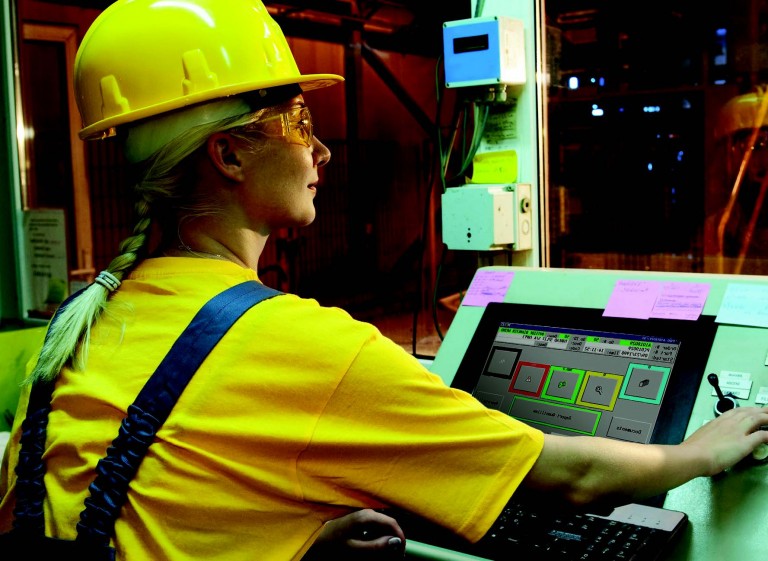As mentioned in Part 1 of the article, trying to collect data at “grouped” operations like laser cutting, roll cutting or furnace operations where many different parts are processed at one time is not conducive to a data collection system.Trying to record production and employee time data at these operations is not easily accomplished with the normal data collection RF bar code system designed for the standard sequential order/operation bar code scanning. Grouping requires more systems logic at the floor level.
Also, using an OEE system to facilitate measurements on machine/lines/cellsthat are designed to produce different parts simultaneously is not going to help either. In fact, your OEE data will be misleading if you are collecting production data (the OEE performance metric). Using a touch screen which has functionality specifically for grouping/nesting at these middle-of-the-road operations can facilitate putting a set of production orders through a process at one time. The ability to transform the ERP data entry formats with a factory floor MES technology which provides functionality for “group” processing is a much better alternative.
In addition, beyond ease-of-use in tracking grouped production,a MES should provide functionality to more accurately account for labor time by splitting labor time based on jobs works simultaneously. This prevents over inflation of labor costs at the part level. Again a MES with enhance User Interface logic can help by pre-assigning the workers to the work area allowing labor time to be split among the jobs based on time or other production factors.
In Part 1 we discussed issues that can cause problems in the first or start-up operations as well as the middle-of-the-road activities. In the final or finishing step, quality measurements might need to be collected and possibly“Earn-a-Label” bar code printing can provide additional benefitsof fast, accurate and on-demand labeling along with using touch screen MES logic on the floor. Also, sometimes the creation of a Purchase Order for outsourced work is a necessity and can be generated directly from the factory floor to save time, eliminate unnecessary paper flow, minimize administrative time and money.
And although an OEE Machine Integration solution can provide visibility into machine availability (up time verse total available time), when added to an integrated MES, the OEE can provide much improved metrics on the “who, what and when”improving visibility into specific production problem identification and subsequent elimination.
With the change in hardware technology over the past several years, RF Bar Code readers commonly used for Data Collection projects are now way too expensive and old fashion. As briefly explained above, new MES systems provide enhance logic to facilitate activities at all start-up, middle and last-stepproduction operations. A MES with enhance User Interface (UI) and withfocused floor specific logic can improve material and labor tracking, eliminate waste and put you on the right track using very inexpensive hardware like tablets and other mobile devices. And should you want to continue and extend your floor MES system directly to the machine, this newer approach will help enhance the collection the OEE information with very specific real-time information about production performance and quality information tied not just to a machine but also to parts and operators.
FACTIVITY’s Manufacturing Execution Software (MES) collects data from the factory floor and provides metrics needed to implement lean manufacturing practices. The system monitors equipment availability, performance and quality to visually display Overall Equipment Effectiveness (OEE) in real-time and integrates fully with your ERP.
For more information about FACTIVITY products and MES technology in general, visit our website at www.factivity.com
